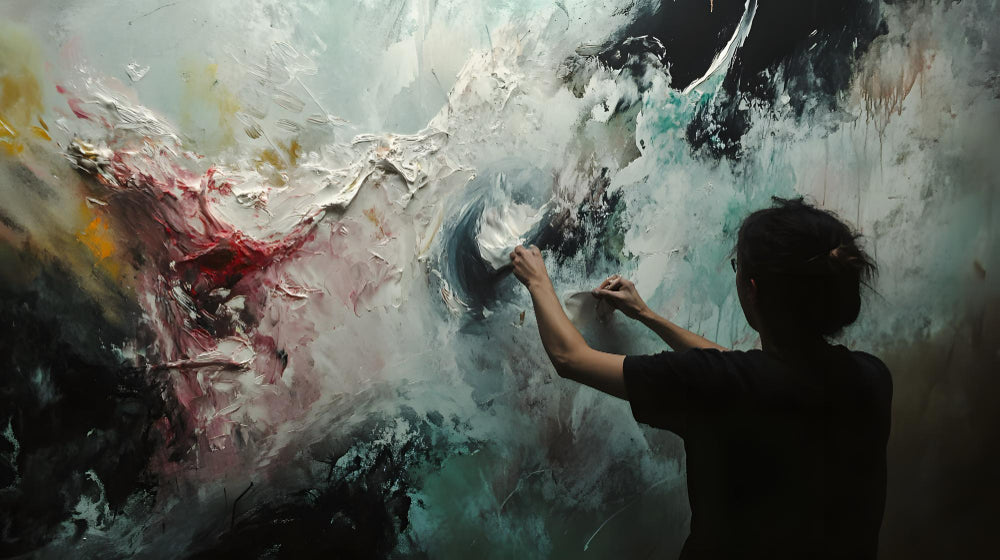
Creating Movement and Depth in Abstract Paintings
Creating Movement and Depth in Abstract Paintings
Abstract art is a very open world, so one of the most interesting things that artists must explore about it is the creation of space as well as energy and movement on what is an inherently flat surface. One can use color, texture, layering, and composition to create the impression of space, energy, and dynamism. These are useful techniques both for practiced painters and for beginners who want depth and movement in their abstractions.
1. Layering of colors and textures Layering is perhaps the most effective techniques to create depth in abstract art. Start building up your work using multiple layers of paint, applying paint at various opacities. Overlapping transparent against opaque colours, you would be able to create an illusion of the space in the picture; that is, the foreground, middle, and background. The inclusion of layering also brings a tactile dimension to your painting; hence, it creates a better feeling of depth.
Textures can come in with mediums or heavy paint applications. Gels and pastes or even sand can introduce actual layers into the art piece, adding to its value. Strategically applied textures in different areas can be used to direct the eye of the viewer and create an illusion of movement across the canvas.
2. Contrasting colors and values
Another technique to give depth is through contrasting color and contrasting values (lightness or darkness of a color). Light colors push the viewer backward, whereas darker shades seem to come forward. This push-and-pull creates depth in your image, so it appears you are looking at a physical space. To get movement, try side-by-side the complementary colors-these pairs create a vibrational effect so your painting comes alive.
You can also use value contrasts to define areas of emphasis and to draw the viewer's eye to certain parts of the canvas. Contrast tends to attract the viewer's attention, while softer transitions create a softer depth.
3. Gestural Techniques and Dynamic Brushstrokes
Movement which can be easily evoked through great strokes of brush characterized by abstract paintings. Applying fast strokes dripping paint or making splatters can create an impression of motion and fluidity. You can give direction to the eye of the viewer across the painting by applying it in different directions and speeds.
For extra sizzle, experiment with gestural techniques. Ditch a controlled, deliberate painterly approach and let your hand trace around freely and intuatively across the surface. In this gestural manner, you will discover an organic, energetic quality to the painting that builds movement and emotional conveyance.
4. Composition and Focal Points
Thus, it is a strong composition that would define movement and depth. Do not place everything right in the middle of the canvas to make your painting dynamic, but use asymmetry and rule of thirds in a different composition. The leading line-implied or explicit-can be used to lead the viewer's eye across the canvas in the creation of movement.
It also serves to explain and make some sense of the flow in your painting by creating focal points. Focal points work as resting areas for the viewer's eyes as well as help order the visual noise, making the movement intentional and interesting.
Conclusion
To acquire such depth and movement in abstract paintings, there must be a combination of techniques: layering, contrasting colors, dynamic brushwork, and thoughtful composition. Experiment with these methods to turn a flat canvas into a living, breathing work of art. One may embrace the spontaneity and freedom that abstract art gives you, which would then follow one on the path to deeper, more vibrant creations.
Creating Movement and Depth in Abstract Paintings








